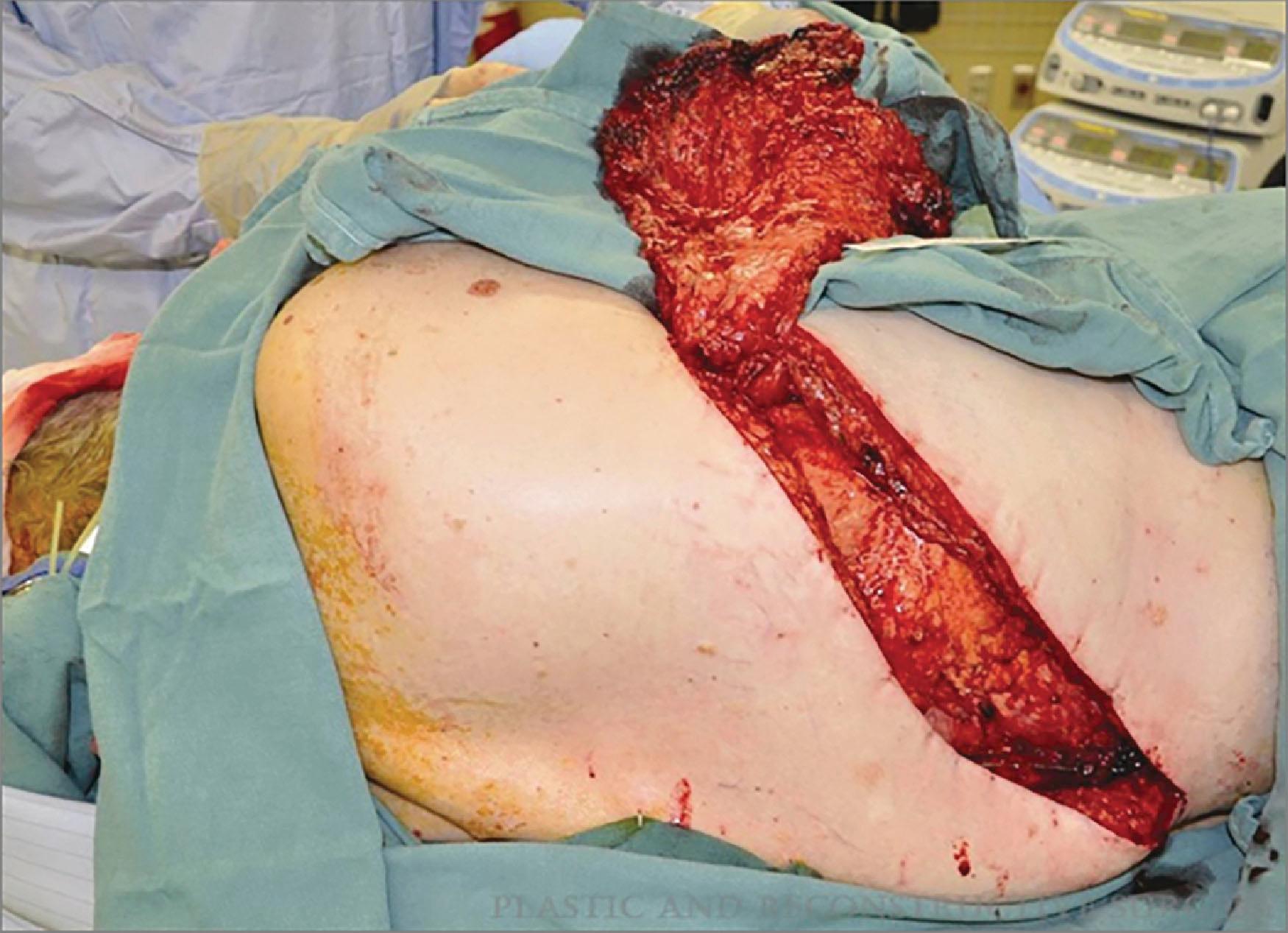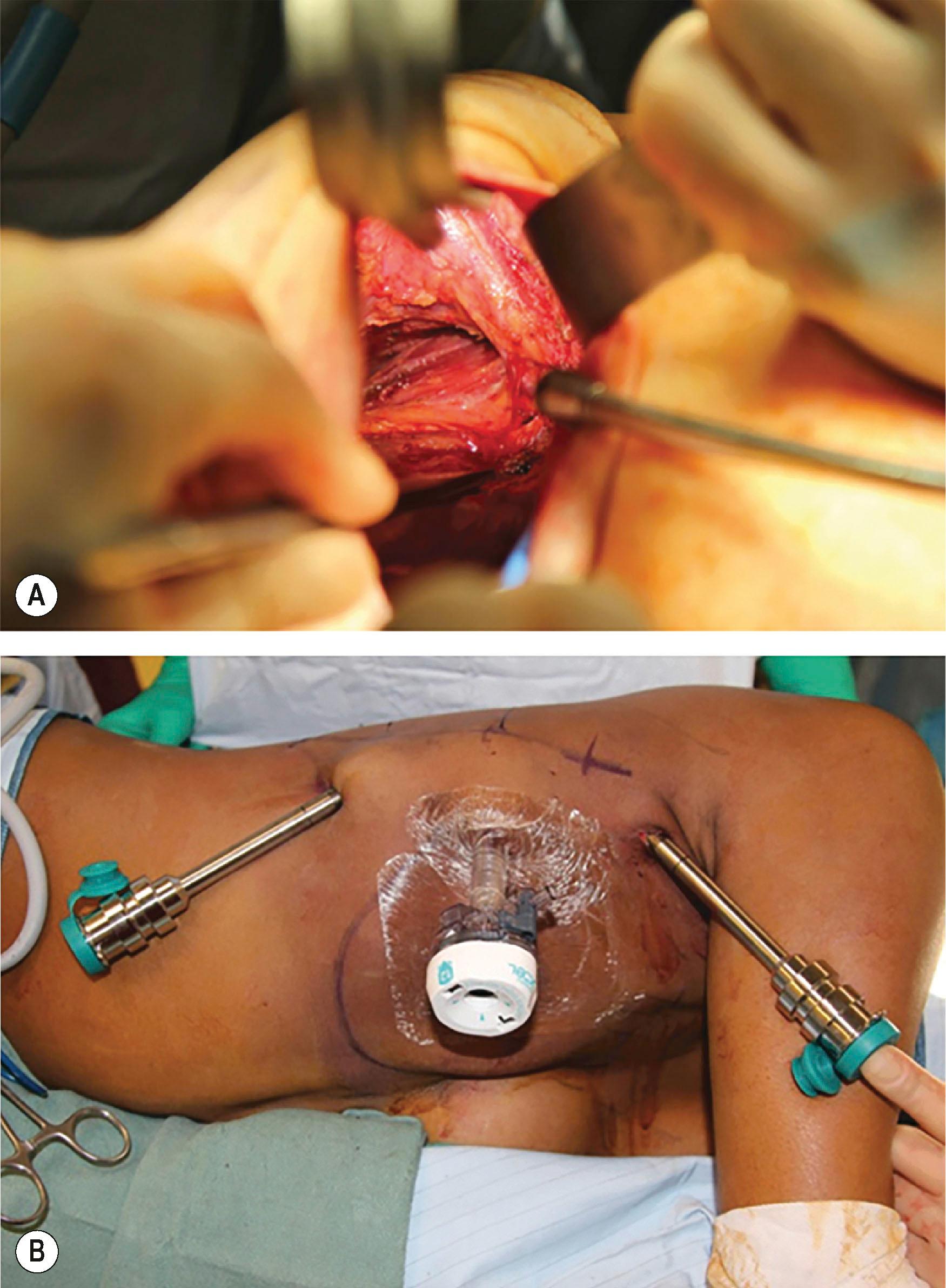Physical Address
304 North Cardinal St.
Dorchester Center, MA 02124
Robotic surgical technology has become ubiquitous throughout the various fields of minimally invasive surgery owing to its enhanced precision, tremor elimination, motion scaling, high resolution, 3D optics, and a user-friendly interface. These unique features inspired the senior author to integrate it into plastic surgery, performing the first clinical cases beginning in 2009, and more specifically into breast reconstructive surgery. In this subspecialty, minimizing skin incisions, improving cosmesis, decreasing donor-site morbidity, and achieving a more delicate dissection of vascular pedicles are important goals. The advantages offered by the robotic platform help accomplish those goals. This chapter discusses the clinical application of robotic-assisted latissimus dorsi harvest (RALDH) and robotic-assisted deep inferior epigastric perforator flaps (RoboDIEP) for breast reconstruction. We outline the advantages of the robotic platform in breast reconstruction, describe the indications for its use, present the operative technique, and discuss the limitations of this novel robotic approach. We conclude with a few suggestions to improve the learning curve of robotics among plastic surgeons and facilitate its wider adoption.
The latissimus dorsi (LD) muscle flap is a fundamental tool in the armamentarium of reconstructive surgeons. It is widely used for breast reconstruction (both in primary and second- stage reconstruction after tissue expansion). Its traditional harvest technique, however, requires long and sometimes unsightly incisions. In addition to a 15–40-cm skin incision over the back (to reach the origin of the muscle along the thoracolumbar fascia; Fig. 49.1 ), a second axillary incision is sometimes needed to dissect the thoracodorsal pedicle and transfer the flap. The LD flap is often used for secondary and tertiary breast reconstruction and is typically harvested with a skin component to replace missing or irradiated breast skin. In some instances, however, only the muscle is needed for reconstruction. Such instances include implant coverage in two-stage, delayed-immediate reconstruction for the irradiated breast; lower pole support in direct-to-implant or stage I of a two-stage breast reconstruction following nipple–areolar complex (NAC)- sparing mastectomy; and in breast reconstruction following upper-outer quadrantectomy.

A minimally invasive harvest technique of the latissimus flap, that obviates the need for unsightly and long length incisions, has always been a desirable aim. The endoscopic approach has been tested by multiple groups and is currently still being used in select centers. It has, however, a high rate of conversion to open because of its multiple inherent technical challenges. These include limited visualization around the curvature of the back, lack of versatility of the dissecting instruments, challenges in identification and control of perforators, inability to maintain an adequate optical window, difficulties in maintaining dissecting planes, and awkward positioning of the operating surgeon. These factors led many centers to abandon the technique.
The robotic platform emerged as a novel technology offering unique advantages that address most of the shortcomings of the endoscopic approach. Its high-resolution 3D optics provide an outstanding picture clarity. The seven degrees of freedom of its operating arms allow an exceptional level of dexterity. Those features are especially beneficial in flap harvest procedures where maintaining consistent dissection planes, manipulating fragile perforators and small nerves “atraumatically”, and performing a safe dissection in tight spaces (i.e. around the curvature of the back) are key for success.
With these features in mind, the senior author investigated the use of the robot in the harvest of the LD muscle flap. It was first tested it in a cadaver model in 2010, then applied successfully in a series of eight patients. The RALDH approach proved to be feasible and safe with no major complications. Refinements in this novel harvest technique have been introduced over the years and it has now become an important component of the delayed-immediate breast reconstruction protocol for select patients at our institution.
To reliably perform this technique, the robotic surgeon needs to be familiar with the pertinent anatomy of the upper back and axilla. The LD muscle (also known as the “broadest muscle of the back”) is a large triangular muscle that controls extension, adduction, and internal rotation of the shoulder joint. It originates from the thoracolumbar fascia and inserts onto the humerus. It is innervated by the thoracodorsal nerve (C6, C7, C8). It is a type V flap with a dual blood supply: (1) the thoracodorsal branch of the subscapular artery; and (2) the posterior paraspinous perforators. Because of the multiple anastomoses between these two systems, the entire muscle can remain viable if either of the two pedicles is divided. To note, the thoracodorsal artery (length ranging from 6.5 cm to 12 cm) travels from the axilla to course over the anterior surface of the muscle, then enters it from underneath, and divides into two or three branches at its undersurface.
The ideal candidate for a RALDH is a patient with a low body mass index (BMI), thin body habitus, and/or athletic built (who does not have appropriate alternative autologous donor sites for breast reconstruction). An absolute contraindication is prior division of the thoracodorsal pedicle (during a prior lymphadenectomy, thoracotomy, etc.) Relative contraindications include comorbidities that will likely increase the wound/flap complications rate that include, but are not limited to, smoking, diabetes mellitus, end-stage renal disease, and collagen vascular disease. It is indicated for patients who have undergone external beam radiation therapy with a tissue expander, have adequate skin expansion (without high levels of capsular contracture and/or very thin skin), and are not candidates for free flaps.
Eligible patients are first presented in a multidisciplinary breast conference. The team is composed of medical oncology, surgical oncology, radiation oncology, and plastic and reconstructive surgery. Stage 1 surgery involves skin-sparing mastectomy followed by immediate placement of a tissue expander (with or without a bioprosthetic mesh). Our approach is for patients to undergo expansion every week during the 4–6 weeks prior to external beam radiation therapy (EBRT). Just prior to the initiation of EBRT, they are deflated to one-third of their total fill capacity. One week post EBRT, patients are re-expanded to their original volume. If more volume is needed, expansion is continued post EBRT but at a slower rate (i.e. every 2–3 weeks until the anticipated volume is reached). The ideal volume needs to accommodate both the final implant and the muscle flap. If at that point, capsular contracture or thin skin coverage has become a problem, but volume of expansion is sufficient, a RALDH is performed 6 months after completion of EBRT, to allow recovery and healing of the soft tissue. If a free flap or a skin island is desired or indicated, an alternative procedure is performed instead.
The patient is placed in the decubitus position with the ipsilateral arm prepped and placed on a sterile Mayo stand. A bean bag is used for stabilization. An axillary roll is placed. The borders of the LD muscle are then marked: the anterior border is identified preoperatively during active muscle contraction, the superior border is marked from the tendinous insertion (at the tip of the scapula) to the posterior border, and the posterior border is typically around 4 cm lateral to the spine. The bed can be retroflexed in the middle to open the space between the iliac crest and the lower part of the ribcage. This is especially helpful at the extremes of dissection whenever the arms line up with one another. When this occurs, the arms will often hit the hip or the shoulder. Retroflexion addresses this issue.
The patient’s previous mastectomy skin incision is re-opened, and the tissue expander explanted. Then, the lateral border of the LD muscle is identified through the axilla, and a pencil Doppler is used to verify patency of the thoracodorsal artery and vein. Four to six centimeters of pre-dissection is done on the superficial and deep surfaces of the LD muscle ( Fig. 49.2A ).

The first port (12-mm port) is placed within the previous mastectomy incision, which is then closed (temporarily) to achieve and maintain adequate insufflation. The second and third ports are placed 8 cm away from each other and from the first port, and 8 cm anterior to the anterior border of the muscle. The distal, 8-mm port, will be the only visible scar with the arm in repose ( Fig. 49.2B ).
Become a Clinical Tree membership for Full access and enjoy Unlimited articles
If you are a member. Log in here